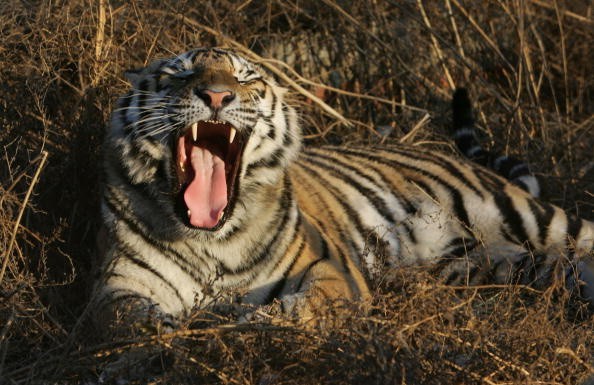A large-scale animal study has shown something very interesting about yawning: Vertebrates that have larger brains and more neurons are bound to have longer-lasting yawns.

Robust Positive Correlation
Researchers gathered data on 1,291 different yawns from videos online and zoo trips, covering a sum of 46 species of bird and 55 species of mammal, and discovered a "robust positive association" between the length of time an animal yawns for and the brain size. Jorg Massen, an ethologist from Utrecht University in the Netherlands said: "We went to various zoos with a camera and close to the animal cages for the animals to yawn. That was quite a long haul."
The study could add to our previous knowledge about yawning - both why it occurred in the first place, and why some animals like giraffes have no need to worry about yawning at all. "Although the pattern of yawning is stable, its length of time has co-evolved with the size of the brain and numbers of neurons," the researchers wrote in their new paper.
Also Read: Duke Researchers Find Link Between Contagious Yawning and Age
An Essential Way of Cooling the Brain
Besides, this function appears to be preserved across a different range of animals, in such a way that its evolutionary origin may be trailed back to at least birds and mammals' common ancestor and possibly even further. The analysis was initiated to test a hypothesis that was proposed in 2007 by one of the researchers that was involved in this study: that yawning is an important way of making the brain cool.
It, therefore, follows that bigger brains are in need of longer yawns to cool them properly.That would appear to be proved by this data, which also reveals that mammals have a longer yawning duration than birds. Birds have an increased core temperature than mammals, which implies a greater difference in temperature with the surrounding air, meaning a shorter yawn is sufficient to drag in some cooler air. In a 2016 study that involved humans, the same conclusions were reached, though just 24 species and 205 yawns were measured in that case.

Thermoregulatory Function
It discovered that the shortest yawns (0.8 seconds) were from mice, with the longest yawns lasting for 6.5 seconds coming from humans. Andrew Gallup, an ethologist from the State University of New York (SUNY) said: "Through the concurrent inhalation of cool air and the expanding of the muscles close to the oral cavities, yawning boosts the flow of cooler blood to the brain, and thereby has a thermoregulatory function."
The experts don't make any connections to intelligence, only the brain size and the number of neurons it packs in; nor is there any recommendation to the frequency of yawning. For instance, we humans usually yawn between 5-10 times a day. It can be infectious too, as you might have observed.
One hypothesis for this is that it acts as a social function, gathering groups into the same state of mind and possibly assisting to synchronize patterns of sleep. (Though more research will be required to puzzle out that one.)
Related Article: Experts Uncover How Yawning Helps Group of Lions Be Synchronized
For more news, updates about yawning animals and similar topics don't forget to follow Nature World News!
© 2026 NatureWorldNews.com All rights reserved. Do not reproduce without permission.





